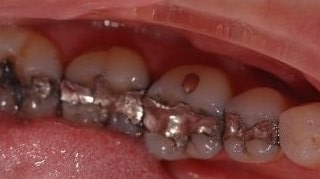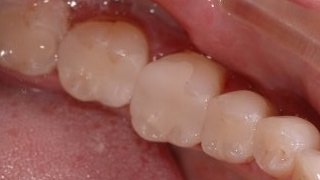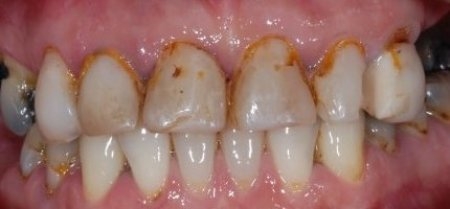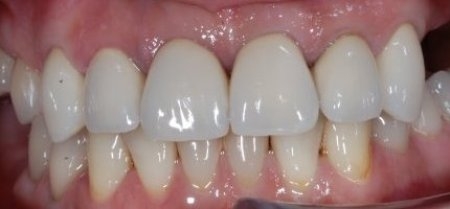
We frequently use dental implants to replace missing teeth. And our one-visit tooth crown service using CEREC CAD/CAM technology is perfect for busy people.
On this page…
Dental Implants
When you have a tooth missing, the options are…
- to leave a gap
- to have a partial denture
- to have a bridge
- to have an implant
How implants work
The implant option offers a fixed titanium screw post that is biocompatible and integrates with the bone of the jaw. Bone grows and fuses with the titanium surface of the implant.
The top of the implant emerges through the gum and a porcelain crown can be screwed onto the implant. This results in a tooth-shaped crown fixed in place to replace the missing tooth.
Benefits
The implant crown can handle full loading from chewing. It doesn’t move or need to be removed for daily cleaning. We find patients do like to have full biting power and this is the best tooth substitute you can get.
These tooth-shaped crowns can also be highly aesthetic, depending on the amount of bone and gum present after the original tooth has been removed. Like all things there is a failure rate, and sometimes if there isn’t enough residual bone, it’s not possible to place an implant.
Process and time-frame
Graham has completed the surgical course to place implants. Where it’s complicated, we will refer you to a specialist to have it done.
The stages for getting an implant involve the initial assessment, then tooth removal and the surgical placement of the implant. A wait of 4-6 months is needed for the implant to stabilise. Then an impression of the top of the implant is taken and 2-3 weeks later the crown on the implant can be fitted.
The times between stages can vary depending on the individual case.
Get in touch and we’ll happily assess your suitability for having an implant.
Talk to us about dental implants…Phone 360-2475 » (click to call) |
Tooth Crowns
If you have heavily filled teeth with large amalgam or resin fillings, those teeth are at risk of stress fracturing and breaking down. Often the side of the tooth or a cusp will fracture.
These teeth need restoring in such a way that they will be strengthened for longevity. Full crowns with gold or porcelain fused to metal are traditionally used, but there are inherent problems with that approach…
- The crowns usually take two weeks to be made and require you to have sensitive temporary crowns, which often allow bacterial leakage during this time.
- Two visits are required, with an injection each time.
- An impression is taken during the first visit, which causes gagging problems for some people.
- The temporary crowns can fall off or be sensitive due to bacterial leakage.
- There is increased root canal risk due to extended exposure and bacterial leakage.
To eliminate these problems we use modern CEREC CAD/CAM restoration systems. With this technology we can provide a full porcelain crown or partial crown in a single visit, within 1½ to 2 hours.
With our single-visit approach there is no second injection, no impressions that make some people gag, and no temporary crowns that can fall off or be sensitive due to bacterial leakage. Not to mention…
- Less root canal risk due to immediate bonding on cementing.
- Porcelain that is as pure as possible with no layering, bubbles or internal stresses caused by the usual laboratory techniques.
Studies show 10-year success rates of 94% with CEREC, and 86% at 20 years.




Talk to us about about tooth crowns…Phone 360-2475 » (click to call) |
Dental Bridges
Dental bridges are another option for replacing missing teeth.
A dental bridge is so named because it bridges the gap created by a missing tooth. In most cases a crown is placed on the two anchoring teeth (aka abutment teeth) on either side of the gap to support a false tooth in between.
Dental bridges maintain the shape of your face and distribute the forces in your bite properly by replacing missing teeth. The benefits of a dental bridge are…
- Restore your smile.
- Restore the ability to properly chew and speak.
- Maintain the shape of your face.
- Distribute the forces in your bite properly by replacing missing teeth.
- Prevent remaining teeth from drifting out of position.
There are several different types of bridge, and they can be made from different types of materials too.
- Bonded bridge: A bonded bridge has a ceramic tooth made to replace the missing tooth and it has a ‘wing’ attached to it to allow it to be resin bonded to the adjacent tooth. These are very conservative of tooth structure but can have issues with debonding.
- Cantilever bridge: A cantilever bridge is where the tooth beside the missing tooth is prepared for a full crown, and then the crown is made with another tooth cantilevered from it to fill the space of the missing tooth.
- Crown bridge: Another type of bridge has the teeth on each side of the gap cut down to allow full crowns to be made for them, and a tooth to replace the missing tooth fused between them. This is 3 teeth fused together with the middle tooth supported by the two teeth on either side, i.e. at each end of the bridge.
- Implant bridge: Bridges can also be made to fit onto implants. For example, 3 teeth can be replaced with two implants that support a 3-tooth bridge.
Dental bridge materials
Bridges can be made from gold, porcelain fused to a metal base, or all ceramic. The type of material used depends on the individual situation.
Pros & cons of dental bridges
- Advantages: They are fixed in place, so they don’t need to be removed like a partial denture.
- Disadvantages: Sometimes it is quite destructive of the supporting teeth when they are prepared for the bridge. They are also harder to keep clean under the bridge.
Talk to us about about dental bridges…Phone 360-2475 » (click to call) |
